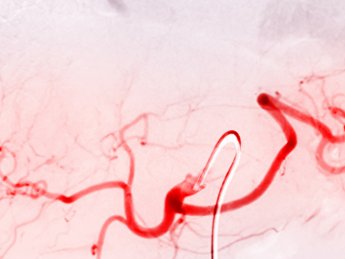Epistaxis (nosebleeds)
Epistaxis: definition and emergency care
What should I know about nosebleeds (epistaxis)?
Epistaxis, commonly known as a nosebleed, is loss of blood from the nasal cavities occurring when blood vessels in the nasal membrane rupture. This causes blood to flow from the nose, from one or both nostrils. While most nosebleeds are benign and subside on their own, in some cases emergency care is needed to stop the flow of blood.
Epistaxis typically affects children aged 2 to 10 and adults aged 50 to 80.
In 80% of cases, the epistaxis originates in the Kiesselbach plexus, a vascular network located in the entrance of the nasal cavity This area is particularly exposed to local inflammation, nasal membrane dryness and local trauma (often caused by picking). In general, it is benign and can be treated at home.
However, in 20% of cases, the epistaxis is posterior, caused when the blood vessels located at the back of the nose, near the throat, rupture. This can result in significant bleeding that flows into the throat. This type of epistaxis is more serious and difficult to control, and may require medical care.
What are the symptoms of epistaxis?
The main symptom of epistaxis is blood flow from one or both nostrils. The nosebleed can be light or abundant and the patient may also experience a tingling sensation, loss of smell or mild pain in the nasal area.
In the event of frequent nosebleeds, it is recommended that the patient see an ENT specialist (for adults or children depending on age).
It is necessary to seek emergency care if the nosebleed:
- Affects a child under 2
- Is abundant
- Lasts more than 30 minutes even when pressure is applied
- Occurs after trauma or injury
- Causes breathing difficulties
In the event of severe symptoms, dial 112 or 15 in France, or ask a friend or family member to bring you to the ER.
What are the risk factors and causes of epistaxis?
Several risk factors may contribute to nosebleeds, including:
- High blood pressure
- Nasal dryness
- Nasal trauma
- Excessive use of blood-thinning medications
A dry environment or a sudden change in temperature can also increase the risk of nosebleed.
How is epistaxis diagnosed at the American Hospital of Paris?
At the American Hospital of Paris, an epistaxis diagnosis begins with an in-depth assessment of the patient’s medical history followed by a thorough physical examination.
In some cases, additional exams such as blood tests, x-rays or an endoscopy may be necessary to determine the underlying cause of the bleeding.
What emergency treatment options are available for epistaxis?
Most nosebleeds stop on their own or with the use of simple techniques such as blowing the nose, sitting upright and leaning the body and head forward and/or pinching the nose with the thumb and index finger for ten minutes. In other cases, treatments such as nasal packing or embolization may be proposed.
Nasal packing
Anterior packing to stop bleeding in the front of the nose
To stop bleeding in the front of the nose, the doctor may use gauze (which may or may not be absorbable), nasal sponges or hemostatic glue. The gauze is inserted into the front of the nasal cavities. Because it is done under local anesthesia, the procedure is painless, though it may cause mild discomfort.
Posterior packing to stop bleeding in the back of the nose
When the blood flows from the back of the nose, two procedures are available, both performed under local anesthesia:
- Posterior packing, which consists in inserting gauze in the back of the nasal cavities to stop the bleeding.
- Dual-balloon catheter, which consists in introducing two inflatable balloons (one in each nostril) which are then inflated with a liquid in order to exert pressure and thereby facilitate coagulation. These catheters, effective in approximately 70% of cases, are left in place for 48 to 72 hours, then gradually deflated over 24 to 48 hours.
If significant blood flow continues despite these treatments, a surgical procedure such as embolization or ligation of certain blood vessels may be considered.
Embolization
In the event of severe epistaxis, embolization may be recommended. This minimally invasive treatment, performed by an experienced interventional radiologist under local or general anesthesia, consists in blocking the culprit blood vessels by introducing an embolic agent in the form of small spheres. These spheres block the blood vessels and halt the flow of blood.
According to recent studies, this procedure is a safe and effective treatment for persistent nosebleeds. In 2023, a meta-analysis of 41 studies involving 1,632 patients showed an average immediate success rate of 90.9% and an average recurrence rate of 17% . Major complications are very rare; minor complications are more frequent but temporary (nasal pain, headaches, hematoma at the insertion site).
EPISTAXIS: KEY FIGURES
-
60%
Percentage of the general population experiencing a nosebleed at least once in their life.

